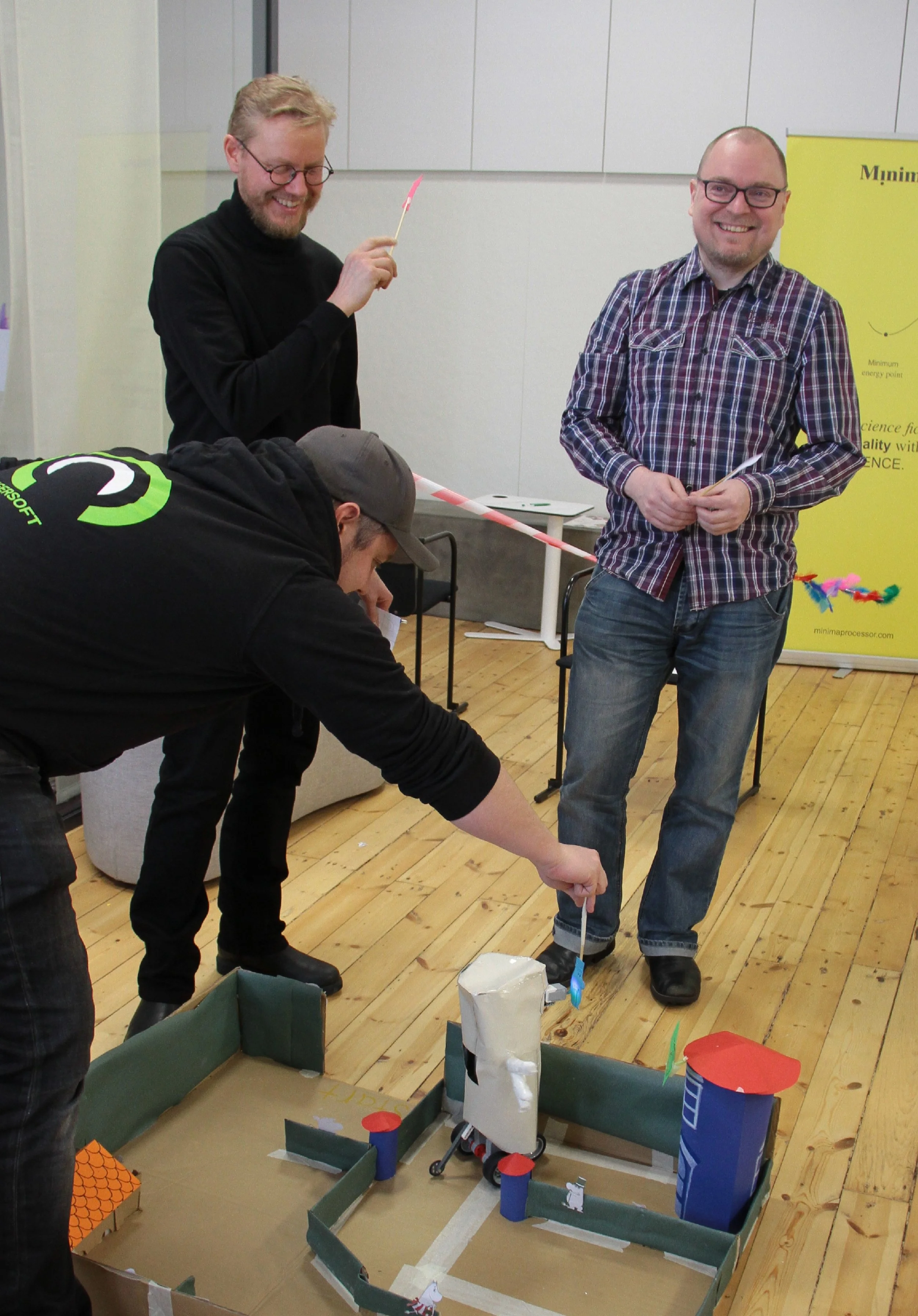Student projects that show the power of design-based learning
Project presentation with a can-do attitude
At Code School Finland students learn through design-based project learning and over the years we’ve seen many wonderful creations. Today we want to share a few highlights.
Primary years: Games for everyone
In our Coding Club for primary-level students, the aim was simple: let’s make games, share them, and let everyone pay. Over several sessions the students:
brainstormed game ideas
learned basic coding
created a set of small games full of jumping, clicking, collecting and avoiding funny obstacles
shared the finished games with the entire school
This project nurtured creativity, computational thinking and peer-sharing all at once. Check out the games yourself: https://codeschool.fi/codeclubgames (Sorry the poster is only in Finnish. Click the links or scan the QR codes to play the games)
Middle Years: AI meets sustainability
Our middle years students explored intelligent design in one of their recent projects. Working in teams, they developed an AI app that recognizes recyclable waste. The journey looked like this:
Identifying a real-world problem
Learning basic machine-learning and AI ethics concepts
Designing the app
Testing and refining
Reflection: What if the model mis-labels something? Are some items non-recyclable? Who decides?
This sequence reflects design-based project learning: authentic problem → design time → build/test → iterate → reflect. The outcome was not just an app, it was a student-led solution with purpose, plus deeper understanding of both technology and responsibility.
High School: Community escape room in robotics
In a robotics course, students were tasked with designing an escape-room challenge involving robotics, puzzles and physical interactions. Then the entire school and local community were invited to visit and attempt the challenge. The workflow included:
Ideation: Students planned the theme of the escape room, the flow of puzzles and how robotics would be integrated
Design and build: Teams built the puzzles, coded the robotics devices, set up physical space, planned how visitors would move through the room.
Testing and iteration: Internal teams tested the escape room
Launch and community share: The escape room was opened to other students, teachers, parents and community members
Reflection and feedback: Students collected feedback from visitors and discussed how design choices impacted user experience.
This project is a good example of design-based learning. Students worked on a real and challenging task, tested their ideas many times, and shared the final result with others. The steps of design thinking were clear at every stage.
Visitors testing the escape room.
Interested to learn more?
If you’d like to run similar design-based projects in your school we would be happy to set that up.
Contact
Kaisu Pallaskallio
CEO Code School Finland
kaisu@codeschool.fi
+358 44 355 7355


